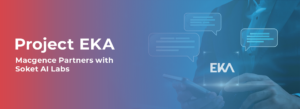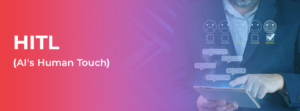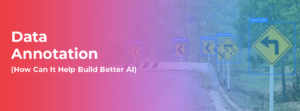- Data Annotation: The Backbone of Computer Vision Models
- What Are Common Label Types of Computer Vision Data Annotation?
- Why Data Annotation Matters in Computer Vision?
- Industries Where Computer Vision with Data Annotation is Used Most Often
- Get Customized Computer Vision Data Annotation Solutions with Macgence
Transform Your AI/ML Models by Leveraging Computer Vision Data Annotation Services
Data annotation, called data labeling, adds labels or other information to a data collection. A labeled dataset is often needed to train machine learning models. Most computer vision models need many annotated images or videos to learn patterns. Data annotation can be quite a time-consuming process, especially when done manually. AI-powered labeling tools and a growing amount of data are revolutionizing the approach to data annotation by providing features such as auto labeling, smart polygon selection, and tracking labeled objects from frame to frame. In this blog, we will delve into the types of computer vision data annotation, why it matters, its use cases across various industries, and much more.
Data Annotation: The Backbone of Computer Vision Models
Data annotation is the cornerstone in developing computer vision models, playing a critical role in their ability to interpret and respond to the visual world accurately. Computer vision data annotation involves labeling or tagging visual data—images, videos, and text—with descriptive or identifying information. By meticulously annotating data, we provide these models with the essential context to recognize patterns, objects, and scenarios.
This foundational step is similar to teaching a child to identify and name objects by pointing them out and naming them. Similarly, annotated data teaches computer vision models to understand what they ‘see’ in the data they process. Whether identifying a pedestrian in a self-driving car’s path or detecting tumors in medical imaging, data annotation enables models to learn the vast visual cues present in our environment.
What Are Common Label Types of Computer Vision Data Annotation?

Below are four common types of computer vision models and annotations.
Object Detection:
Object detection models can learn to detect objects and estimate their location within a frame. These models are often used for counting and tracking objects in images or videos. Object detection models usually require rectangle labels or bounding boxes to annotate objects inside the frames.
Instance Segmentation:
Instance segmentation models learn to detect objects, identify each object’s location in the frame, and estimate the exact pixels of each object. These models can be helpful if you need more precise pixel estimates for object interactions and higher accuracy. These models require polygon labels to annotate the distinct pixels belonging to an object. Labeling polygons manually is known to be tedious and time-consuming, which is where AI-powered tools can shine.
Classification:
Classification models learn to predict if a defined object appears within an image or video but do not estimate its location or how many instances appear. These models use classification or multi-classification labels applied to the entire image, signaling if the frame contains a specific class.
Keypoint Estimation:
Body pose estimation, hand gesture recognition, and face keypoint models are typical examples of keypoint estimation models. These models learn from labeled points of specific features, such as the joints of a body.
Why Data Annotation Matters in Computer Vision?
Ensuring Quality and Accuracy in Data Annotation
Accurate computer vision data annotation trains models to understand subtle differences among objects, recognize objects in various contexts, and make dependable predictions or decisions based on visual inputs. Inaccuracies or inconsistencies in data annotation can cause misinterpretations by the model, decreasing its effectiveness and reliability in real-world programs.
The Cornerstone of Model Training
Computer vision data annotation is the foundation upon which their learning is built. Annotated data teaches these models to recognize and understand various patterns, shapes, and objects by providing them with examples to learn from. The quality of this teaching material directly influences the model’s performance—accurate annotations lead to more precise and reliable models. In contrast, poor annotations can hamper a model’s ability to make correct identifications or predictions.
Impact on Model Performance and Reliability
The overall performance and reliability of computer vision models directly depend on the quality of the annotated data used to train them. Models that train on well-annotated datasets prepare themselves better to address the nuances and variability of real-world visible data, resulting in higher accuracy and reliability in their output. This is crucial in medical diagnosis, autonomous driving, and surveillance applications.
Industries Where Computer Vision with Data Annotation is Used Most Often

Computer vision, fueled by high-quality annotated data, is transforming diverse industries:
Healthcare
AI-powered medical imaging evaluation detects sicknesses like cancer more accurately and quickly, aiding early diagnosis and remedy.
Autonomous Vehicles
Self-driving automobiles rely upon annotated data to identify objects, navigate roads, and make critical real-time selections.
Retail
Image recognition powers product searches and automatic inventory control, improving consumer experience.
Security and Surveillance
Facial recognition and anomaly detection systems excel at classifying video data, enhancing security features, and preventing crime.
Agriculture
Drones prepared with computer vision data annotation analyze crop health, optimize resource usage, and automate duties, promoting sustainable farming practices.
Get Customized Computer Vision Data Annotation Solutions with Macgence
Get started with Macgence, your ultimate destination for human-generated computer vision data annotation solutions. Our services encompass text, image, video, and audio annotation, catering to all your machine learning and AI endeavors. With Macgence, you’re assured of scalability, which allows us to handle projects of any size and ensure on-time delivery.
We take pride in providing superior annotation quality, as our skilled annotators meticulously label your data to optimize model performance. Our commitment to zero internal bias ensures fairness and neutrality in annotations, enhancing your AI systems’ integrity. Regardless of your industry, Macgence’s cross-industry compatibility ensures customized solutions tailored to your specific needs. Start today and experience the power of human-generated data annotation at Macgence.
Here are our features to ensure that you will get high-quality data from us:
High Annotation Quality
Our domain experts provide computer vision data annotation services for all types of data. They supervise every detail, from data collection to annotation and review.
Quality Check
Our QC team ensures that the flaws discovered during the data improvement process are fixed. We provide you with a perfect computer vision data annotation model within the time frame.
Compatibility across industries
Macgence can provide data annotation services to requirements of all sizes and types, regardless of industry.
Advanced data security
We maintain the best privacy and data security standards. Additionally, we adhere to ISO-27001, SOC II, GDPR & HIPPA standards.
Zero internal bias
Our data annotation and labeling experts eliminate sample, internal, and prejudice biases. We provide realistic training datasets that are free of discrimination.
As a world-leading provider of AI data services, Macgence does more than offer data. Our computer vision data annotation services can boost the models and meet your needs. We provide a range of data enrichment options to improve the AI/ML models. Our objective is to optimize the potential of your data by refining the clarity and insights it provides with each service.
Conclusion
Data annotation services are inseparable from the computer vision landscape and essential in training accurate and robust ML models. The call for well-annotated data will grow as computer vision generation advances. Outsourcing data annotation to specialized services allows businesses to focus on their center abilities while harnessing the power of computer vision for transformative purposes. Unlock the entire capability of your computer vision algorithms with Macgence’s advanced computer vision data annotation services, enable your businesses to experience increased and greater sustainability, and gain a competitive edge over other companies. Enhance your precision and drive transformative applications. Contact us to know more.
FAQs
Ans: – The future of data annotation involves increased automation, AI-assisted tools, and improved quality control to handle the growing demand for labeled data in various industries.
Ans: – Data annotation types include image annotation, text annotation, audio annotation, and video annotation.
Ans: – The role of data annotation is to transform raw data into a format that machine learning models can use. This involves identifying the relevant features in the data and assigning them labels. The labels can be anything from simple categories to complex relationships between features.
You Might Like
February 28, 2025
Project EKA – Driving the Future of AI in India
Artificial Intelligence (AI) has long been heralded as the driving force behind global technological revolutions. But what happens when AI isn’t tailored to the needs of its diverse users? Project EKA is answering that question in India. This groundbreaking initiative aims to redefine the AI landscape, bridging the gap between India’s cultural, linguistic, and socio-economic […]
March 24, 2025
Natural Language Generation (NLG): The Future of AI-Powered Text
The ability to generate human-like text from data is not just a sci-fi dream—it’s the backbone of many tools we use today, from chatbots to automated reporting systems. This revolution in artificial intelligence has a name: Natural Language Generation (NLG). If you’re an AI enthusiast or a tech professional, understanding NLG is essential for keeping […]
March 24, 2025
HITL (Human-in-the-Loop): A Comprehensive Guide to AI’s Human Touch
The integration of Artificial Intelligence (AI) in various industries has revolutionized how businesses operate. However, AI is not infallible, and many applications still require human intervention to enhance accuracy, efficiency, and reliability. This is where the concept of Human-in-the-Loop (HITL) becomes essential. HITL is an AI training and decision-making approach where humans are actively involved […]
March 7, 2025
Data Annotation – And How Can It Build Better AI in 2025
In the world of digitalized artificial intelligence (AI) and machine learning (ML), data is the core base of innovation. However, raw data alone is not sufficient to train accurate AI models. That’s why data annotations comes forward to resolve this. It is a fundamental process that helps machines to understand and interpret real-world data. By […]


 Previous Blog
Previous Blog







